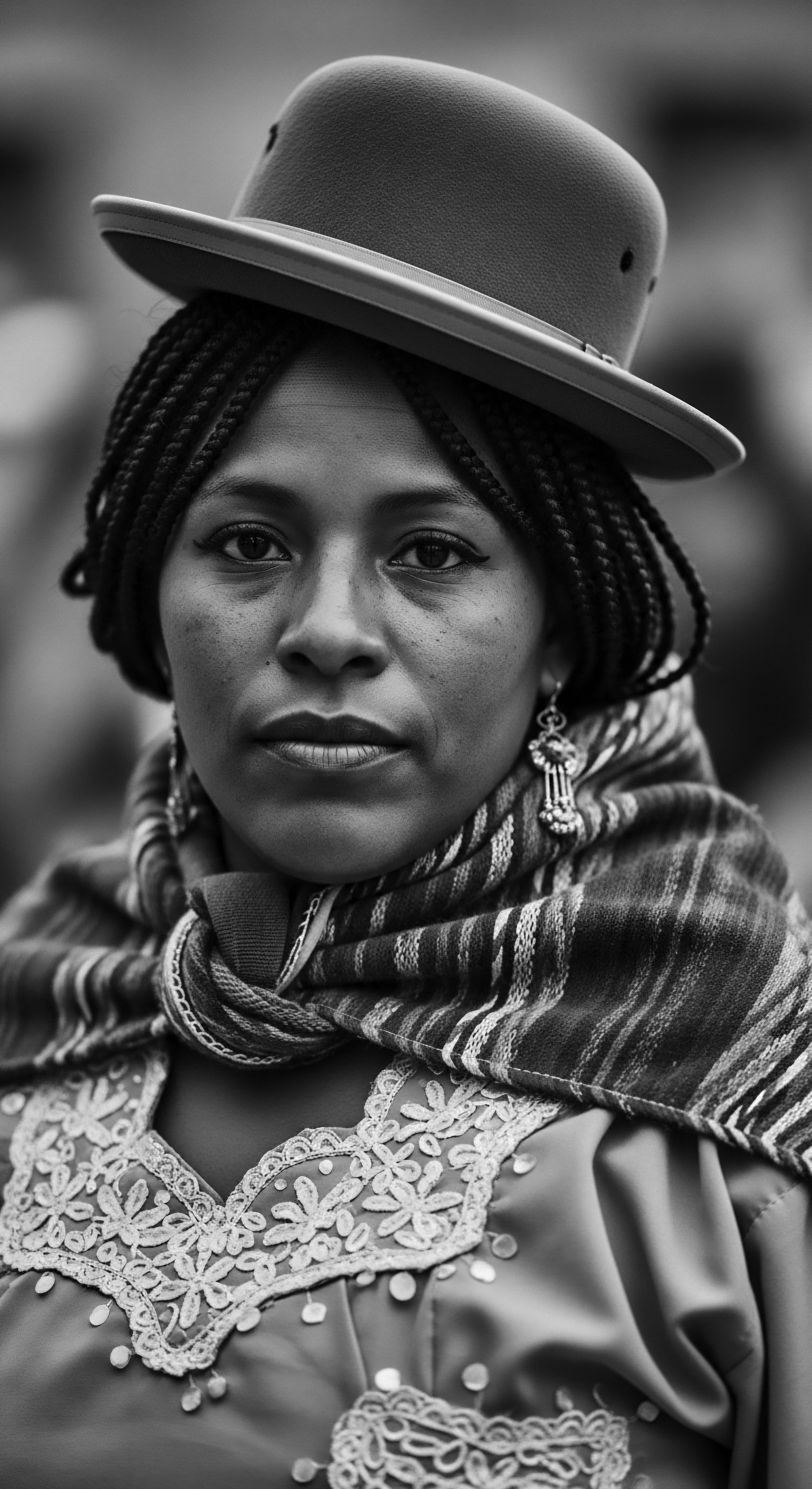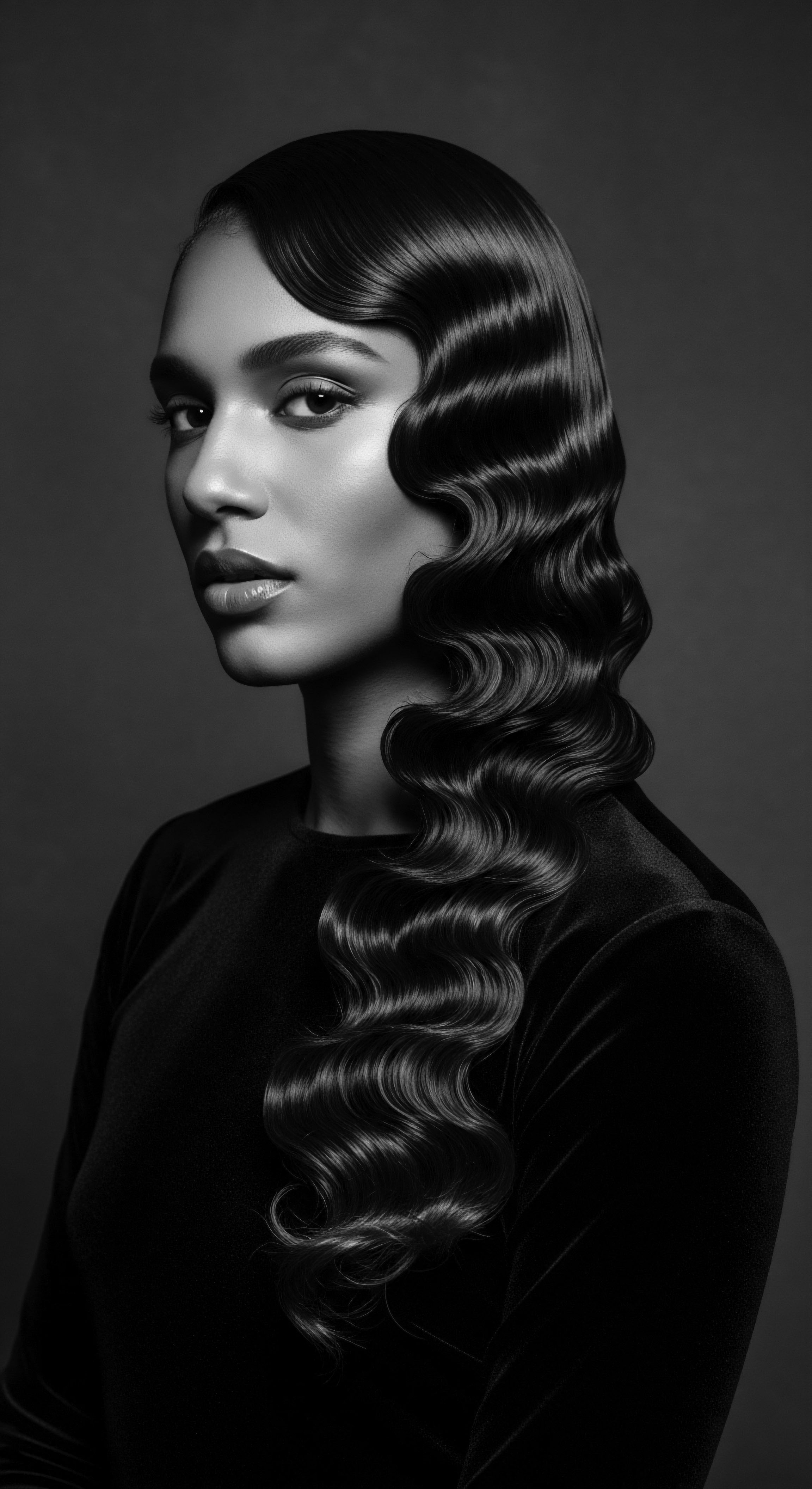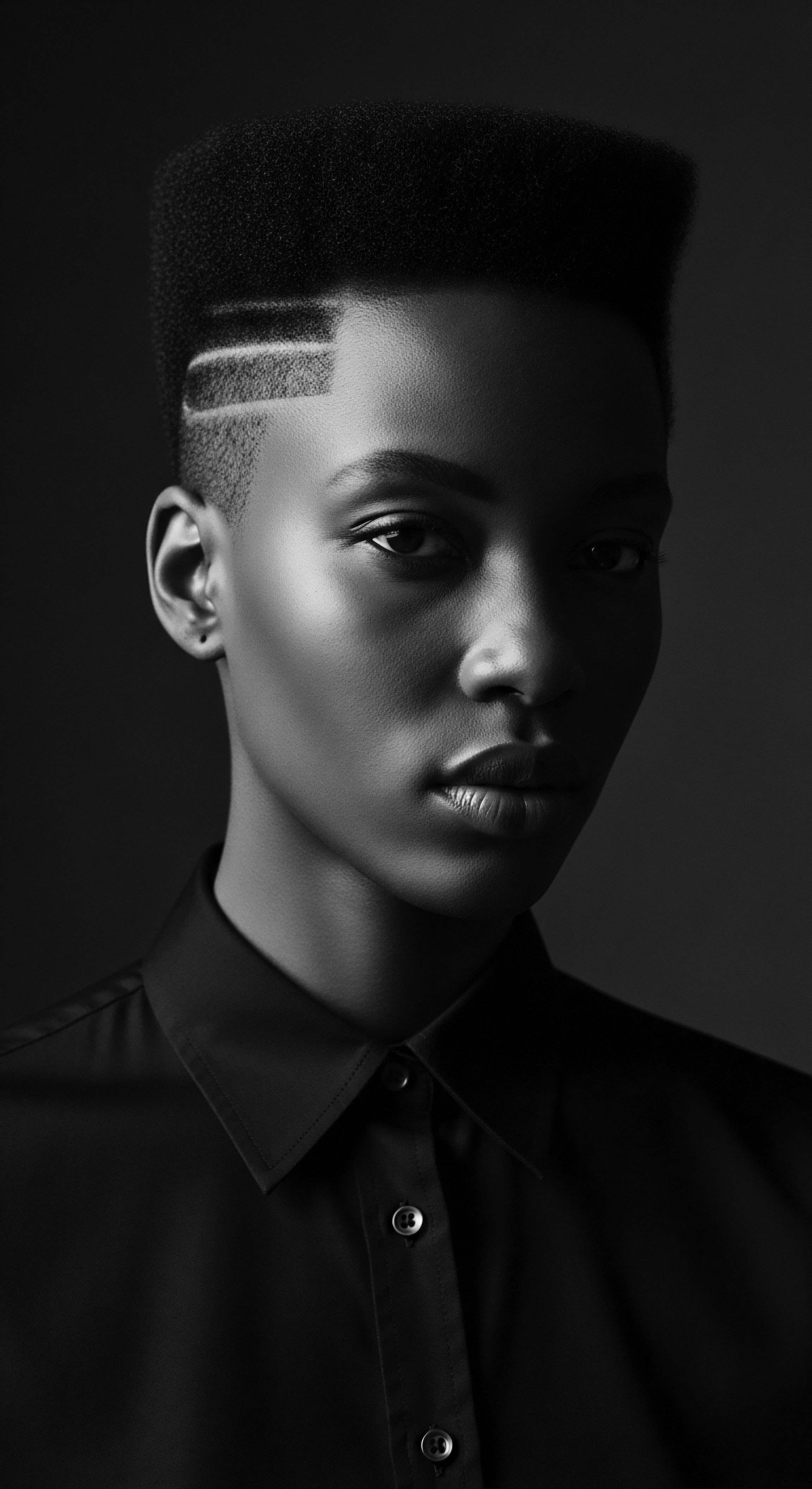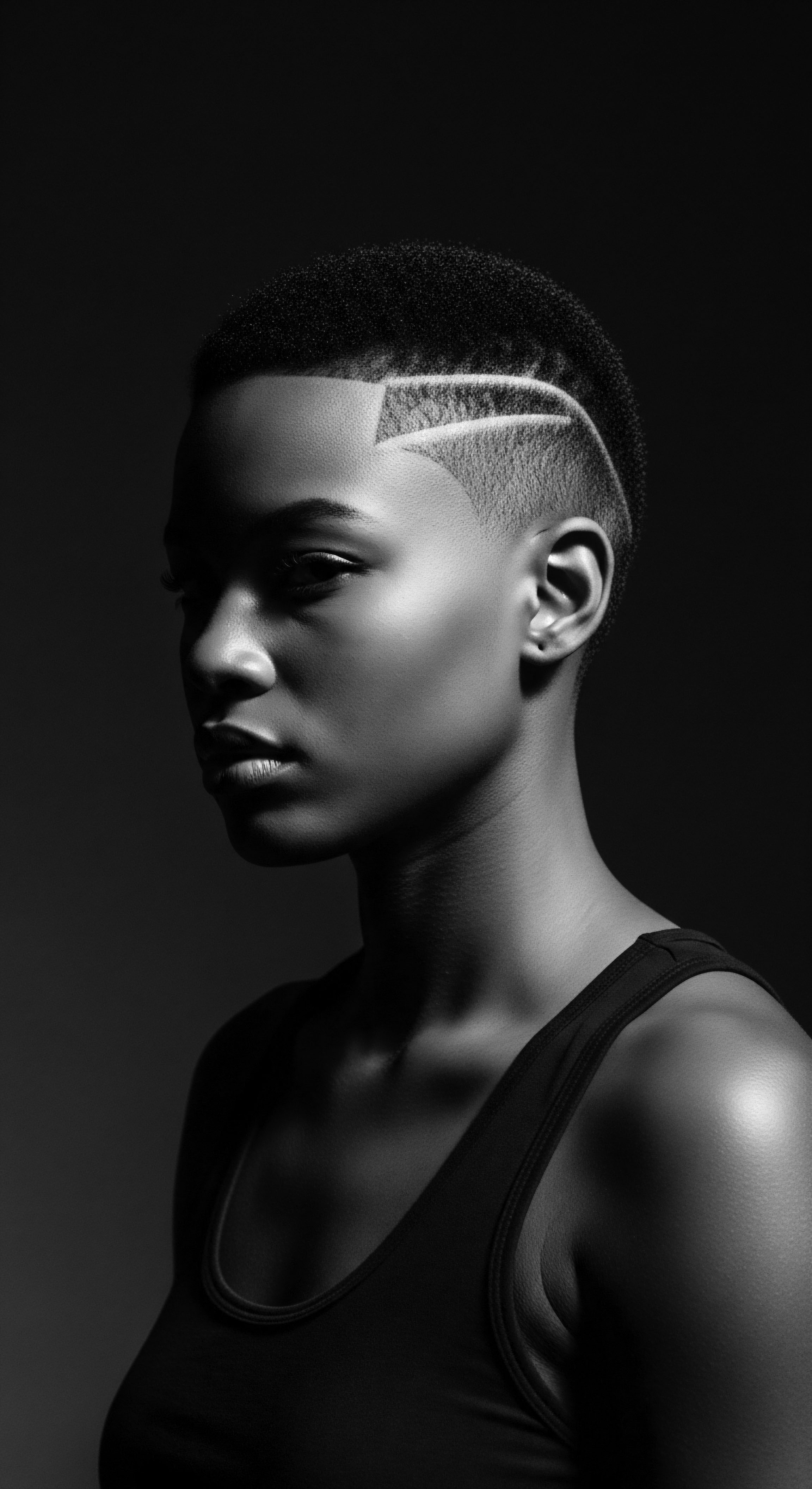
Fundamentals
The expanse of Colonial Latin America, spanning from the late fifteenth century through the early nineteenth century, marks a profound epoch in the unfolding of global history. It was a period when European powers, notably Spain and Portugal, extended their dominion across the Americas, establishing vast colonial empires. This era brought about monumental shifts in the indigenous landscapes and societies, introducing new systems of governance, belief, and commerce. Beyond these structural impositions, it reshaped the very fabric of human identity and cultural expression, particularly for those of African descent and the Indigenous peoples whose lands were claimed.
The meaning of Colonial Latin America stretches beyond mere geographical or chronological boundaries; it speaks to a transformative historical experience where disparate cultures clashed and, sometimes, merged under conditions of immense power imbalance. Within this crucible, the human spirit, including the deeply personal aspects of self-presentation such as hair, became a silent yet eloquent canvas for survival, resistance, and continuity. This historical moment is not simply a footnote in the grand chronicles of empires; it is a resonant echo in the ancestral memories of countless individuals, particularly those whose textured hair carries the legacy of this intricate past.
Understanding this period requires acknowledging the profound impact of forced migrations and the imposition of alien social constructs. The arrival of European colonizers introduced novel notions of race and social hierarchy, which fundamentally altered how people perceived themselves and were perceived by others. Hair, in its myriad forms, became a physical marker within these imposed systems, often dictating social standing and the degree of perceived ‘civility.’
Colonial Latin America represents a crucible where diverse hair heritages intertwined with oppressive systems, giving rise to unique expressions of identity and resilience.

The Roots of Imposition ❉ Early Encounters and Erasure
Upon arrival, a chilling practice often unfolded ❉ the forced shaving of enslaved Africans. This act was more than a measure against lice or unsanitary conditions aboard the wretched slave ships; it was a deliberate, dehumanizing gesture designed to strip individuals of their identity and sever their spiritual connection to homeland. For many African societies, hair held profound spiritual and social significance, communicating marital status, age, tribal affiliation, wealth, and communal rank (Byrd & Tharps, 2014).
To remove hair involuntarily was to attack the very soul, a calculated effort to erase ancestral knowledge and cultural memory. This initial act of erasure set a distressing precedent for the ensuing centuries, during which hair continued to be a battleground for control and self-affirmation.
Indigenous communities of Latin America too experienced profound disruptions to their ancient hair traditions. Before the arrival of Europeans, hair customs among various Indigenous groups symbolized connection to land, community, and spiritual beliefs. For instance, across Peru, long, flowing hair or intricate braids were often associated with Andean identity, a marker of pride and cultural belonging. Quechua women, for example, used specific braiding patterns to indicate marital status ❉ two braids signifying marriage, while one or many could suggest a single status (Kollar).
These traditions, often deeply woven into daily life and ceremonial practices, faced pressures to conform to European aesthetic norms. The colonial gaze often dismissed or demonized these ancestral practices, yet the tenacity of Indigenous peoples ensured that many hair traditions persisted, sometimes overtly, sometimes in hidden forms.

Social Architectures and Hair’s Role ❉ The Casta System
One of the defining elements of Colonial Latin America was the intricate social hierarchy known as the Casta System. This system, a complex racial classification scheme, sought to categorize individuals based on their lineage and perceived racial mixture ❉ Peninsulares (Spanish-born Europeans), Criollos (Europeans born in the Americas), Indigenous peoples, and Africans, along with a multitude of mixed-race categories like Mestizos, Mulattos, and Zambos. The Casta system influenced every facet of life, including economics, taxation, and social status, serving as a powerful tool for social control (Chacón, 2013). Within this rigid structure, physical characteristics, including hair texture and color, became informal yet potent indicators of one’s place.
The European ideal of straight hair became the benchmark of beauty and social acceptance, leading to the pervasive concept of “pelo malo” (bad hair) for textured hair, contrasted with “pelo bueno” (good hair) for straighter textures (Caldwell, 2007). This linguistic and social distinction, deeply rooted in colonial racist beliefs, continues to resonate in many Latin American and Afro-diasporic communities today. The very word “chino,” common in some Latin American countries to denote curly hair, derives from a Casta term referring to a specific African-Indigenous mix, often associated with a “pig” or “tainted blood” connotation during the colonial period (Tlauhyo Metzti). This historical linguistic trail illuminates the profound intersection of racial classification, social stigma, and hair texture within the colonial project.
The consequences of this system were far-reaching, extending beyond social categorization to influence self-perception and cultural practice. Many individuals, seeking to align with the dominant European aesthetic and thereby attain a higher social standing, adopted practices that altered their natural hair textures. This long-standing pressure created a complex legacy where notions of beauty became inextricably tied to racial hierarchies, a legacy that contemporary movements for natural hair seek to untangle and heal.

Intermediate
Moving beyond the foundational understanding, Colonial Latin America emerges as a landscape where the very threads of hair became conduits for clandestine communication, symbols of fierce defiance, and vessels for cultural preservation. The intermediate exploration of this period deepens our appreciation for the agency expressed by enslaved Africans and Indigenous peoples, even amidst systematic oppression. Their hair, far from being a passive canvas, actively participated in shaping narratives of survival and collective memory.

The Tender Thread ❉ Hair as a Medium of Resistance and Survival
The human need for freedom, for connection to one’s lineage, found remarkable expression through hair in Colonial Latin America. Enslaved African women, facing unimaginable brutality, transformed their intricate braiding practices into a covert language of liberation. In places like Colombia, particularly around the region of San Basilio de Palenque, the first free village in the Americas founded by escaped enslaved people (maroons) led by Benkos Biohó, cornrows became literal maps to freedom (Hunt). These weren’t simply decorative styles; they were strategic diagrams of escape routes, depicting paths through dense jungles, the locations of rivers, and even the positions of Spanish troops (Hunt).
- Departes ❉ This hairstyle, featuring thick braids tied into buns atop the head, signaled planned escapes, acting as a visual cue for those seeking liberation (Ancient Origins).
- Caracol ❉ Another style, perhaps mirroring the spiral of a snail shell, could indicate a winding path or a safe harbor, providing crucial information for navigating treacherous terrain.
- “The Mesh” ❉ A particular braided pattern that conveyed a pre-arranged escape, signifying readiness for flight (Hunt).
These ingenious methods underscore the profound wisdom and resourcefulness of those who resisted enslavement. The oral histories passed down through generations in Afro-Colombian communities attest to the truth of these practices, even when formal archives remain silent, as such acts of resistance rarely found documentation in colonial records (Ancient Origins). This cultural memory, preserved through generations of hair braiding, continues to inform identity and solidarity in these communities.
Beyond mapping escape routes, hair served a vital, life-sustaining purpose. Enslaved women, particularly those originating from rice-growing regions of West Africa, concealed precious seeds within their braided strands (Carney, 2004). This quiet yet profound act of botanical preservation ensured future food security for their communities, whether on provision grounds granted by planters or in the burgeoning quilombos and palenques, the communities of formerly enslaved people who established autonomous settlements (Carney, 2004). This practice, an act of sheer will and ancestral foresight, fundamentally altered the agricultural landscape of the Americas, particularly in regions like Brazil and South Carolina, where West African rice (Oryza glaberrima) was introduced through such covert means (Carney, 2004).
Hair, in the hands of the enslaved, transformed into a potent tool of resistance, embodying escape routes and nourishing future generations with hidden seeds.

Colonial Laws and the Defiance of Adornment ❉ Tignon Laws
The power of hair to convey status and identity was not lost on colonial authorities. In late 18th-century Spanish colonial Louisiana, a specific legislative act targeted free women of color, whose elaborate hairstyles often rivaled, and sometimes surpassed, those of white women (Winters, 2018). The Tignon Laws, enacted in 1786 by Spanish colonial Governor Don Esteban Miró, mandated that Creole women of color wear a tignon—a scarf or handkerchief—to cover their hair in public (VICE, 2018).
This law was not merely a matter of dress code; it aimed to diminish the social standing of free Black women, to overtly mark them as belonging to a “slave class,” regardless of their actual legal status (VICE, 2018). It was an attempt to assert visual hierarchy and control by de-emphasizing their beauty and perceived social threat. Yet, these women, with remarkable spirit, turned the tables.
They transformed the mandated headwraps into statements of individual style and collective pride, adorning their tignons with vibrant colors, luxurious fabrics, and artistic flair, effectively reappropriating the very symbol of oppression into an emblem of their enduring elegance and cultural strength (VICE, 2018). This act of sartorial resistance showcased the deep cultural ties that persisted and adapted despite colonial pressures, reminding us that acts of defiance often take forms far subtler than open rebellion.

A Shared Hairitage ❉ Converging Traditions in the Diaspora
The confluence of African, Indigenous, and European cultures in Colonial Latin America gave rise to distinct hair traditions that often blended elements from each. While European ideals of straight hair were promoted, Afro-descendant and Indigenous communities continued, and sometimes modified, their ancestral practices.
| Heritage Origin African |
| Traditional Practice/Significance Intricate braids, twists, and knots as social, spiritual, and communal markers. |
| Colonial Adaptation/Impact Used for covert communication (escape maps), hiding seeds/gold, defying oppressive laws (Tignon Laws). |
| Heritage Origin Indigenous |
| Traditional Practice/Significance Long braids, ceremonial adornments, hair as a connection to nature and community identity. |
| Colonial Adaptation/Impact Persistence of styles as a marker of cultural pride (e.g. Quechua women in Peru), despite pressures for assimilation. |
| Heritage Origin European |
| Traditional Practice/Significance Preference for straight or loosely curled hair, often powdered or styled with wigs among the elite. |
| Colonial Adaptation/Impact Imposition of "pelo malo" ideology, influencing social hierarchies and self-perception, driving chemical alterations. |
| Heritage Origin These varied hair traditions, shaped by colonial encounters, demonstrate the complex interplay of cultural exchange, oppression, and enduring human resilience. |
The resilience of Black and mixed-race communities in preserving their hair traditions speaks volumes. Even in the face of denigration, the core understanding of hair as a personal and collective expression of identity continued. This period, therefore, marks not only the imposition of colonial power but also the quiet, powerful ways in which cultural heritage adapted, survived, and even thrived, leaving a legacy visible in the diverse hair textures and styling practices of Latin America today. It tells a story of perseverance, ingenuity, and an unbroken connection to the wisdom of generations past.

Academic
The academic definition of Colonial Latin America encompasses the complex historical processes and societal structures forged during European imperial rule across the Americas, primarily from the late fifteenth century through the early nineteenth century. This epoch is distinguished by the violent imposition of foreign political, economic, and religious systems onto diverse Indigenous civilizations, accompanied by the forced transatlantic migration of millions of enslaved Africans. The profound Meaning of this era lies in its establishment of enduring racialized hierarchies, the development of syncretic cultural expressions, and the shaping of post-colonial identities across vast territories.
Colonial Latin America was not a monolithic entity; rather, it was a dynamic and often brutal space where Indigenous resistance, African ingenuity, and European ambitions continually intersected, producing unique social formations and cultural legacies, many of which are intimately linked to the human body and its adornments, notably hair. This period provides a crucial framework for understanding the deep historical roots of racial and aesthetic biases that continue to affect textured hair communities globally.

The Deepest Roots ❉ Hair as a Repository of Seeded Histories
To grasp the full Significance of Colonial Latin America within the context of textured hair heritage, one must venture into narratives often marginalized by conventional historical accounts. Consider the extraordinary acts of resistance and biological transfer initiated by enslaved African women, particularly those originating from the Upper Guinea Coast of West Africa. These women, many of whom possessed deep knowledge of rice cultivation, undertook a clandestine botanical migration.
During the brutal transatlantic voyage and upon arrival in the Americas, they secreted grains of African rice (Oryza glaberrima) within their braided hair (Carney, 2004). This act of concealment was not merely about survival; it was a profound act of ancestral knowledge preservation and a strategic measure to ensure future food security for themselves and their nascent communities in hostile new lands.
This specific historical example powerfully illuminates Colonial Latin America’s connection to textured hair heritage. The approximately 40% of enslaved Africans destined for Carolina plantations and 35% for northeastern Brazil during 1550–1640 originated from West Africa’s rice-growing regions (Carney, 2004, p. 2).
This demographic detail underscores the likelihood and indeed the historical confirmation of these women’s agency in introducing a vital crop to the Americas. Their braids, therefore, became living archives, carrying not only sustenance but also the very genetic blueprint of an agricultural heritage across an ocean of suffering.
The introduction of African rice, uniquely suited to certain ecological niches in the Americas, provided a foundation for the development of new agricultural economies, particularly in Brazil. While European narratives often credit mariners with introducing Asian rice, oral traditions in communities descended from enslaved Africans and maroons across Suriname, Cayenne, and Brazil tell a different story ❉ a woman hid grains in her hair, allowing rice to be planted and flourish (Carney, 2004). This is not just a tale of agricultural transfer; it is a profound testament to the role of African botanical knowledge and the resilience of the enslaved in shaping the New World.
Beyond mere aesthetics, the hair of enslaved women became a living vessel for preserving agricultural heritage, transporting vital seeds across oceans and shaping the very landscape of Colonial Latin America.

The Helix of Hierarchy ❉ Race, Hair, and Social Control
The colonial project systematically constructed racial categories as a means of social control, and hair texture became a readily available visual cue within this hierarchy. The Casta system, a socio-racial classification that dictated societal standing, intricately linked one’s perceived racial purity, and thus one’s hair, to privilege or subjugation (Chacón, 2013). The term “pelo chino” or “cabello chino” for curly hair, prevalent in Mexico and El Salvador, stems from the colonial period, referring to a specific casta group, often those of mixed African and Indigenous heritage, and carried a pejorative connotation, derived from a Nahuatl word meaning “scorpion” due to the hair’s coiled appearance (Tlauhyo Metzti). This deep linguistic tie to derogatory colonial classifications highlights how hair texture was weaponized to reinforce a racial hierarchy.
This classification system was not benign; it determined access to resources, legal rights, and social mobility. The persistent notion of “good hair” (pelo bueno), generally associated with straighter textures, versus “bad hair” (pelo malo), applied to kinky or coily textures, became deeply ingrained in the societal psyche (Caldwell, 2007). This ideological framework, rooted in colonial racism, continues to influence beauty standards and hair practices in Latin America and the broader diaspora, creating a complex interplay between identity, self-acceptance, and inherited aesthetic norms. The internalisation of these standards often led to practices of hair straightening and chemical alteration, a pursuit of blanqueamiento, or ‘whitening,’ that was, and in some contexts remains, a response to systemic racial biases (Caldwell, 2007).
Consider the meticulous Delineation of race in colonial documents. Baptismal records, for instance, often included the individual’s designated racial category, solidifying their place within this intricate social structure (Chacón, 2013). This rigorous categorization, including visual cues like hair, provided an apparatus for the colonial state and the Church to levy taxes and tribute payments based on socio-racial standing (Chacón, 2013).
The resistance to such impositions, however, took varied forms. In the face of the Tignon Laws in Spanish colonial Louisiana, which sought to visually denote free women of color as subordinate by forcing them to cover their hair, these women subverted the intent. They transformed the simple tignon into elaborate, vibrant headwraps, thereby asserting their identity and challenging the visual markers of their subjugation through creativity and style (VICE, 2018). This instance reveals a powerful human capacity to reclaim personal expression and turn tools of oppression into symbols of cultural pride, demonstrating that even within the confines of a rigid caste system, freedom of expression found avenues.

The Palenque Paradox ❉ Hair as a Liberated Cartography
The communities of escaped enslaved people, known as Quilombos in Brazil and Palenques in Colombia, stand as powerful examples of self-determination and the preservation of African heritage within Colonial Latin America. These autonomous settlements became havens where ancestral practices, including elaborate hair traditions, were not only maintained but also evolved into tools of collective liberation. San Basilio de Palenque in Colombia offers a compelling case study ❉
In San Basilio de Palenque, the narratives surrounding hair are particularly vivid and rigorously documented through oral history (Ancient Origins). Women, who often had more mobility and less intense surveillance than men, cunningly braided detailed maps of escape routes into the hair of children and other women (Hunt). These hair cartographies included lines and curves representing paths, rivers, and mountains, with knots or bows indicating landmarks (Ancient Origins). This allowed groups of enslaved individuals to plan and execute escapes, armed with a hidden compass woven into their very strands (Hunt).
Moreover, these women also concealed small pieces of gold, pilfered from the mines they were forced to labor in, or vital seeds within their voluminous hair (Hunt). These hidden provisions were instrumental in establishing the economic and agricultural self-sufficiency of the palenques, ensuring future survival and autonomy (Hunt). The practice of hiding seeds, a parallel to the rice seed narrative, speaks to a broader pattern of resourcefulness and ancestral foresight that defined resistance in these communities.
- Strategic Braiding ❉ Specific patterns like “departes” or “the mesh” communicated readiness for escape or actual escape routes.
- Hidden Provisions ❉ Seeds and small gold pieces, vital for sustenance and future economic independence, found safe harbor within intricate hairstyles.
- Cultural Continuity ❉ Hair traditions in Palenques, often passed down through generations, became central to identity and a visible celebration of African heritage and freedom, standing in stark contrast to the dehumanizing practices of the colonial system.
This phenomenon showcases the incredible capacity for human ingenuity under duress and the profound Designation of hair as a living symbol of defiance. In these free villages, the hair was assumed to be styled in its natural state, the term “natural hairstyle” becoming redundant, a powerful testament to their liberated aesthetic and the absence of imposed Eurocentric norms (VICE, 2018). The cultural practices surrounding hair in Palenque, including the annual Festival of Drums and Cultural Expression that celebrates these traditions, attest to an unbroken lineage of wisdom and resistance (Colombia Travel).
The examination of Colonial Latin America through the lens of hair heritage provides a deeper understanding of the period’s multifaceted impacts. It reveals how the body, particularly hair, became a site of both intense oppression and extraordinary resilience. This historical Clarification helps us appreciate the textured hair journeys of Afro-descendant and Indigenous peoples not merely as personal aesthetic choices, but as profound connections to ancestral struggles, triumphs, and the ongoing quest for self-determination. The echoes of these colonial experiences continue to shape contemporary conversations about hair, identity, and liberation across the diaspora, serving as a powerful reminder of the enduring strength encoded within every strand.

Reflection on the Heritage of Colonial Latin America
The grand canvas of Colonial Latin America, often viewed through lenses of conquest and extraction, truly reveals its most resonant hues when observed through the tender, resilient fibers of textured hair. This period was not a mere historical interlude; it was a foundational epoch, etching deep ancestral narratives into the very helix of being. From the first forced shaves that sought to obliterate identity to the ingenious braids that secretly mapped roads to freedom, hair was a silent witness, a sacred archive, and an enduring testament to the human spirit’s refusal to be wholly broken.
We reflect on the profound wisdom held within ancestral practices, often dismissed by colonial gazes, yet validated by the sheer tenacity of their survival. The act of hiding rice seeds in braided hair, a seemingly small gesture, unfurls into a monumental narrative of cultural perseverance, food sovereignty, and the undying resolve to nourish future generations. It speaks to a deep connection to the earth and to community, transcending the immediate horrors of enslavement. This wisdom, passed down through generations of hands styling hair, braiding stories, and whispering ancient remedies, is a continuous thread connecting us to those who came before.
The legacy of Colonial Latin America continues to shape the textured hair experience today. The shadow of “pelo malo” still lingers in some corners, a stark reminder of imposed beauty standards designed to diminish the innate beauty of Black and mixed-race hair. Yet, the same period also gifted us narratives of audacious self-expression and ingenious resistance. The vibrant headwraps of New Orleans, transforming a symbol of subjugation into an emblem of defiance, speak to a spirit of artistry and reclamation that inspires contemporary movements for natural hair acceptance and pride.
The journey of textured hair from elemental biology, through ancient practices, to a potent voice of identity, finds its poignant illustration in this colonial narrative. It reminds us that our hair is more than just protein; it is a living history, a map of ancestral migrations, a symbol of battles fought and freedoms won. As we honor these stories, we not only pay homage to the past but also reclaim the power of our heritage, allowing every curl, coil, and wave to speak volumes about resilience, beauty, and the unbound spirit of those who dared to defy. This enduring heritage calls us to recognize the profound strength found in embracing our authentic selves, rooted deeply in the wisdom of our forebears.

References
- Byrd, A. D. & Tharps, L. L. (2014). Hair Story ❉ Untangling the Roots of Black Hair in America. St. Martin’s Press.
- Caldwell, K. L. (2007). Negras in Brazil ❉ Re-envisioning Black Women, Citizenship, and the Politics of Race. Rutgers University Press.
- Carney, J. A. (2004). ‘With Grains in Her Hair’ ❉ Rice in Colonial Brazil. UCLA Geography.
- Chacón, D. (2013). Las Castas – Spanish Racial Classifications. Native Heritage Project.
- Hunt, R. J. (n.d.). Braids ❉ The Way to Freedom. Roxie Jane Hunt.
- Kollar, Z. (n.d.). Human Hair History. Zsofia Kollar.
- Winters, Z. (2018). The Mulatta Concubine ❉ Terror, Intimacy, Freedom, and Desire in the Black Transatlantic. University of Georgia Press.
